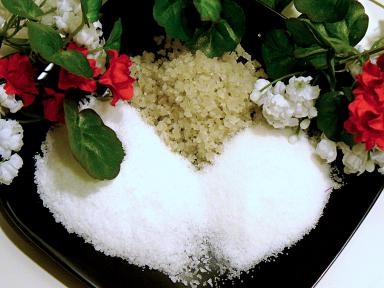 As the holiday season approaches we will start spending more time at home eating and enjoying family time. Good home cooked meals are a great way to bring people to the table, but these meals can often be our silent killers. Recipes handed down from generation to generation often contain a large amount of sodium (SALT). Your grandma’ favorite apple pie, your auntie’s black-eyed peas or those potato latkes that you had to have can add up to excess salt in your diet.
As the holiday season approaches we will start spending more time at home eating and enjoying family time. Good home cooked meals are a great way to bring people to the table, but these meals can often be our silent killers. Recipes handed down from generation to generation often contain a large amount of sodium (SALT). Your grandma’ favorite apple pie, your auntie’s black-eyed peas or those potato latkes that you had to have can add up to excess salt in your diet.
Most people do not have a problem with too much salt in their diet, as long as it is in moderation. It becomes problematic if you have health conditions like high blood pressure, heart problems, or kidney disease. If you have one of these conditions, you were probably told by your health care provider to limit your salt/sodium intake. Sticking to a low –sodium diet can be tough in general but during the holidays, it may prove especially challenging.
Because we want you to maintain your health and enjoy the holidays, here are some ways to reduce your salt intake in your holiday meals:
Measure Ingredients- You can cut the salt out of many recipes or use half the recommended amount. Even small reductions can make a big difference
Portion Control- Keep track of serving size, which may be smaller than you think. Smaller servings mean smaller amounts of salt too!
Baking- Use unsalted butter instead of salted butter. Pies and pastries have salt mainly in the crust already so you probably won’t miss it.
Vegetables- Use fresh or frozen vegetables instead of canned vegetables. Canned veggies are high in salt.
Try other Seasonings- Onion, garlic, chives, parsley and cilantro add loads of flavor.
Salt Shaker- Remove the salt shaker from the table… Out of sight, out of mind.

